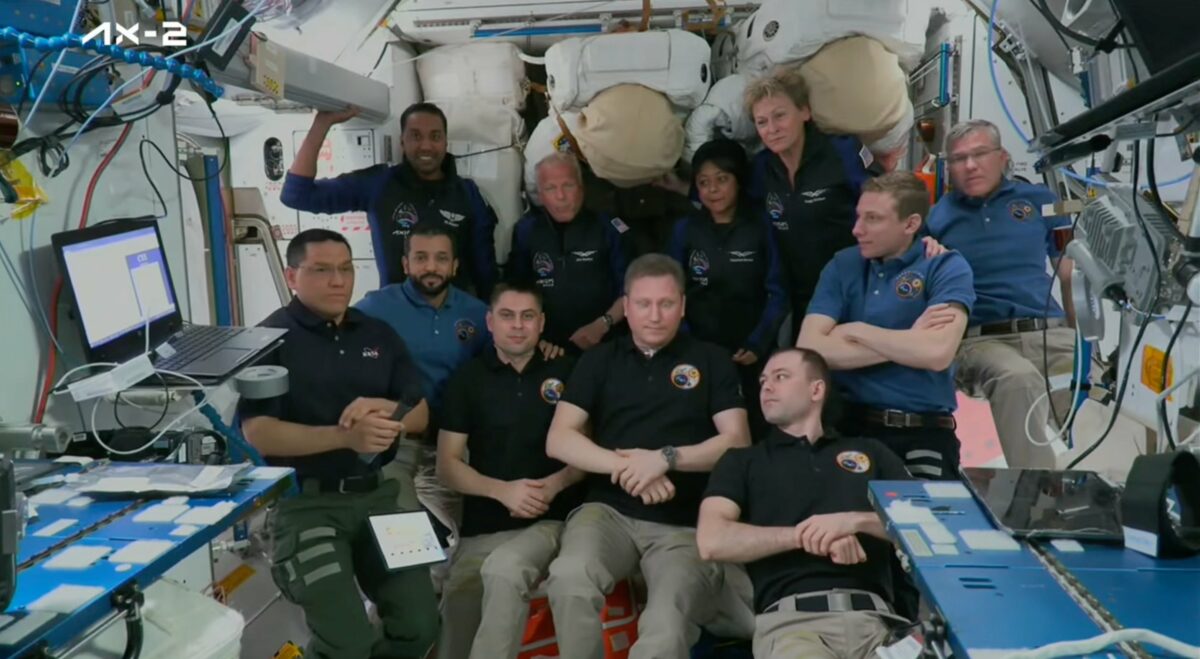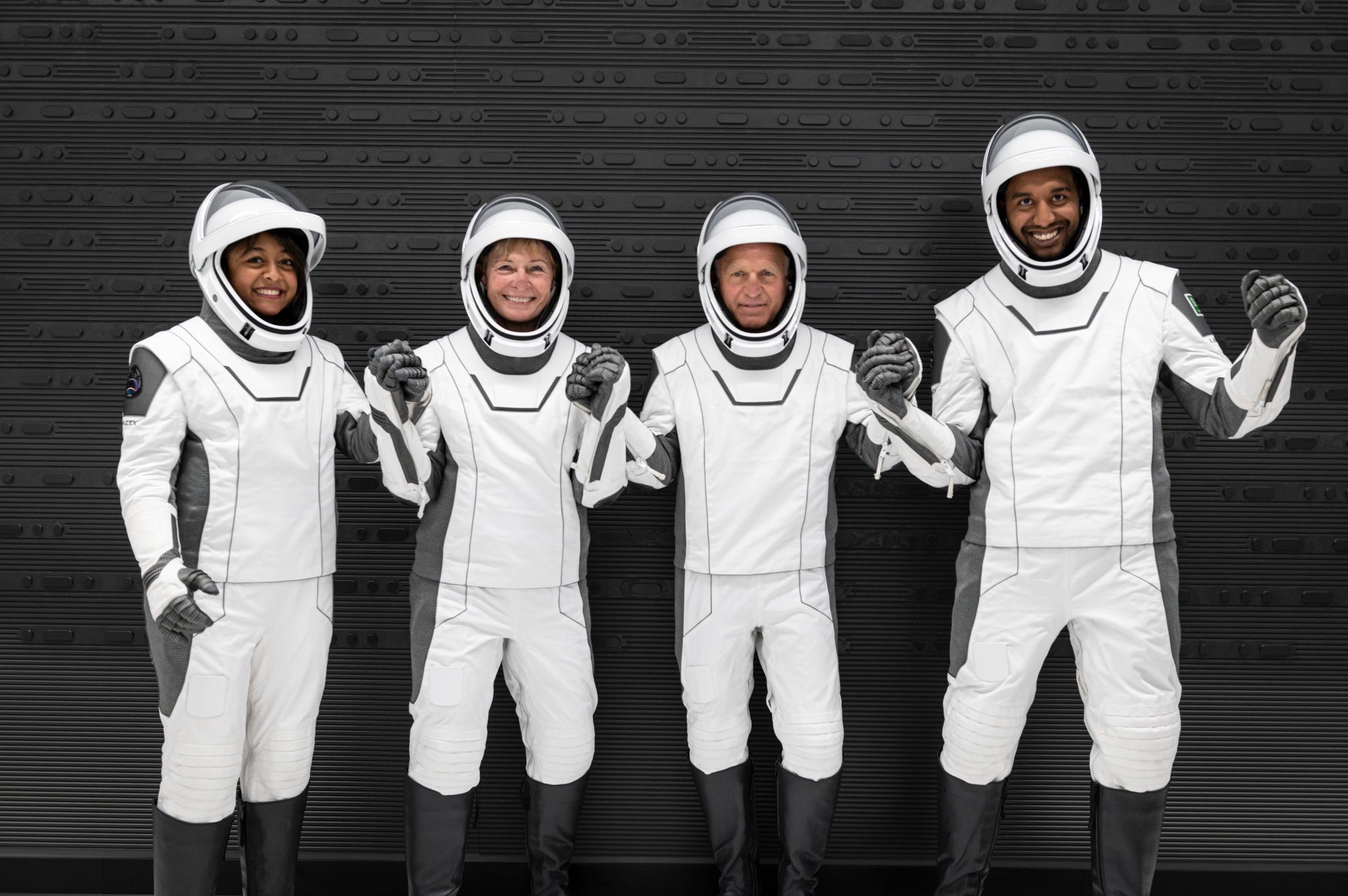WASHINGTON — A SpaceX capsule carrying two Saudi astronauts docked with the International Space Station on Monday, as part of a private mission chartered by Axiom Space.
Rayyanah Barnawi, a scientist who became the first Saudi woman to go into space, and Ali Al-Qarni, a trained fighter pilot, are the first two people from their country to go to the orbital outpost.
“It was a lovely ride,” said mission commander Peggy Whitson, a former NASA astronaut who made the voyage three times in the past, adding: “It was the softest docking I’ve ever felt.”
The fourth crew member is American businessman John Shoffner.
About two hours after docking, the capsule’s hatch will be opened to allow the four to enter the ISS, where they will join the seven astronauts already on board (three Russians, three Americans, and an Emirati).
Another footage of the docking of the Saudi #astronauts' vehicle with the International Space Station. @Axiom_Space #SaudiArabia #ISS @Space_Station @Astro_Rayyanah @AstroAli11
— TRENDS (@mena_trends) May 22, 2023
Video Credit: @saudispace pic.twitter.com/loe7RJoX5x
The SpaceX rocket took off from Florida on Sunday, and the trip to the ISS, which flies around 400 kilometers above the Earth, lasted about 16 hours.
“Thanks for putting your trust in the Falcon 9 team,” SpaceX chief enginer Bill Gerstenmaier told the crew minutes after lift-off.
“Hope you enjoyed the ride to space. Have a great trip on Dragon,” he added, referring to the spacecraft. “Welcome home to zero-g, Peggy.”
The crew is due to spend around 10 days on board the ISS, where they should arrive around 9:25 am Monday.
“Being the first Saudi woman astronaut, representing the region, it’s a great pleasure and honor that I’m very happy to carry,” said Barnawi at a recent press conference.
She added that, aside from excitement for the research she will carry out on board, she was looking forward to sharing her experience with kids while on the ISS.
“Being able to see their faces when they see astronauts from their own region for the first time is very thrilling,” she said.

A career fighter pilot, Al-Qarni said he has “always had the passion of exploring the unknown and just admiring the sky and the stars.”
“It is a great opportunity for me to pursue this kind of passion that I have, and now maybe just fly among the stars.”
#update
— TRENDS (@mena_trends) May 22, 2023
The second private mission to the @ISS, managed by #AxiomSpace, took off from #Florida Sunday. Notably, this launch marked the first instance of Saudi #astronauts journeying to the #space station. @Astro_Rayyanah @Astro_Rayyanah #KSA2Space @saudispace #saudiarabia
Video… pic.twitter.com/Tu2QqWr3gj
The mission is not Saudi Arabia’s first foray into space.
In 1985, Prince Sultan bin Salman bin Abdulaziz, an air force pilot, took part in a US-organized space voyage.
But the space mission involving a Saudi woman is the latest move by the oil-rich Gulf kingdom, where women only gained the right to drive a few years ago, to revamp its ultraconservative image.
The kingdom established the Saudi Space Commission in 2018 and launched a program last year to send astronauts into space.
Experiments
The four-member team is set to carry out some 20 experiments while on the ISS.
One of them involves studying the behavior of stem cells in zero gravity.
They will join seven others already aboard the ISS: three Russians, three Americans and Emirati astronaut Sultan al-Neyadi, who was the first Arab national to go on a spacewalk last month.
The mission to the ISS is the second in partnership with ISS keyholder NASA by Axiom Space, a private space company, which offers the rare voyages for sums that run into the millions of dollars.
The company oversees training the astronauts, chartering their means of transport and ensuring the smooth management of their stay.
Axiom Space carried out its first private astronaut mission to the ISS in April 2022, sending three businessmen and former astronaut Michael Lopez-Alegria to spend 17 days in orbit as part of Ax-1.
Some astronauts on the ISS at the time said they had to take time out of their day — precious in zero gravity — to care for the space tourists.
“My time is actually a lot less constrained than Mike Lopez-Alegria’s time was on the first mission,” said Whitson. “I’ll be available to help the crew members a lot more as they need assistance.”
Private space stations
For Axiom Space, these missions are a first step toward an ambitious goal: the construction of its own space station, with the first module expected to launch in 2025.
The station would at first be attached to the ISS before separating and orbiting independently.
NASA plans to retire the ISS around 2030 and to instead send astronauts to private stations, which will also host their own clients, leading the US space agency to encourage the development of programs by several companies.
Russia recently agreed to extend its use of the ISS until 2028, having threatened an earlier pullout last year as ties unraveled between the Kremlin and the West over Moscow’s invasion of Ukraine. The other international partners — Japan, Canada and the European Space Agency — have committed themselves, like the United States, to continue operations until 2030.

